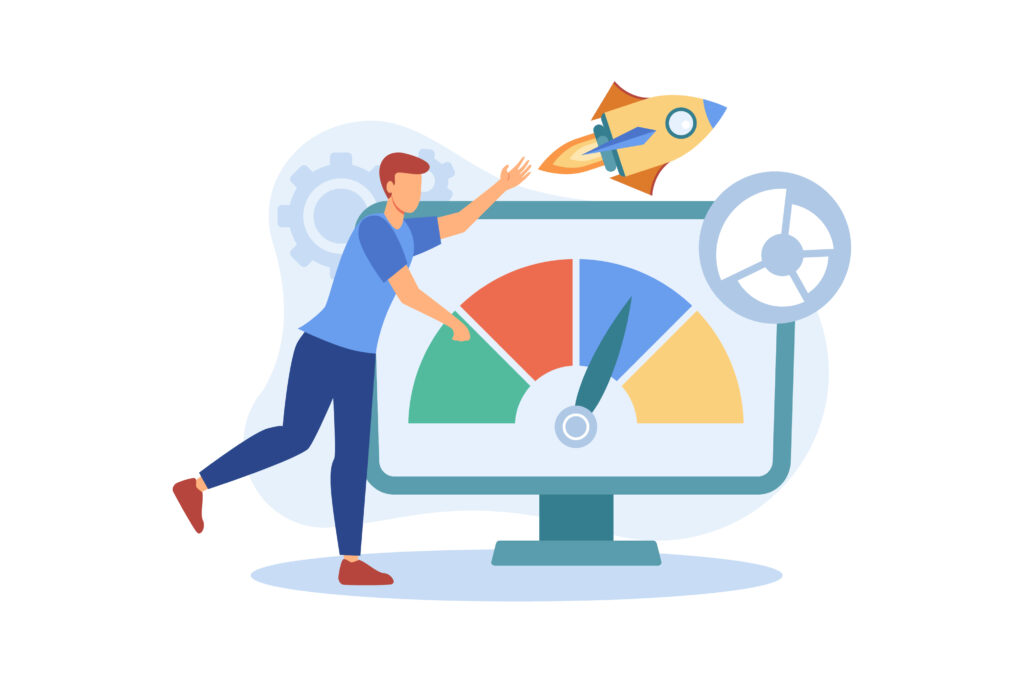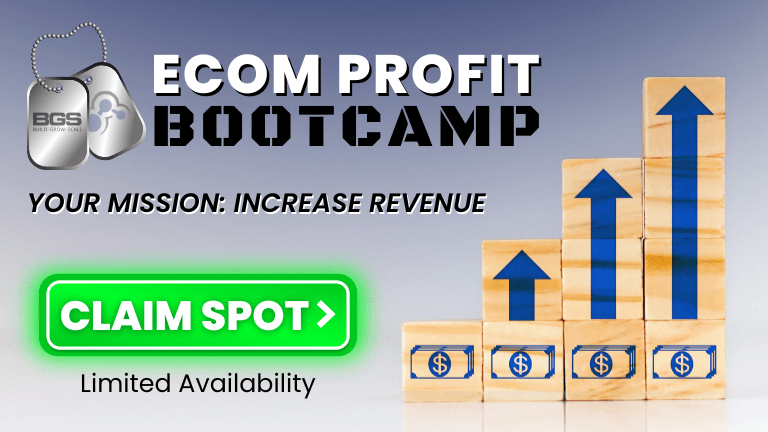Understanding The Impact Of Website Speed Increase On Your Ecommerce Business

Hey, ecommerce business owners! Have you ever considered the impact of website speed on your sales? The truth is, website speed is a critical factor that can make or break your online business.
In today’s world, where every second counts, a slow website can be frustrating for users and cause them to leave before they even see what you have to offer.
But why exactly does website speed matter so much? Well, for starters, it affects user experience. If your site takes too long to load, visitors are likely to bounce and go somewhere else. This means lost revenue and potential customers.
Additionally, site speed is a crucial ranking factor for search engines like Google. A slow site will not only negatively affect your SEO rankings but also deter potential customers from clicking through to your site in the first place.
So if you want to stay ahead of the game and increase your ecommerce business’s success, it’s time to start understanding the impact of website speed increase on your bottom line.
The Effect Of Website Speed Increase On User Experience
Website speed plays a crucial role in user experience, and it can have a significant impact on your ecommerce business. In today’s fast-paced world, customers don’t have the patience to wait for slow-loading websites. They want instant access to what they’re looking for, and if your website doesn’t deliver that, they’ll quickly move on to your competitors.
This is where website speed optimization comes in. One of the primary effects of website speed increase is its impact on conversion rates. A slow-loading website can significantly decrease the chances of a visitor making a purchase, or completing any other desired action on your site. Customers become frustrated when they have to wait too long for pages to load, which can lead them to abandon their purchases altogether. On the other hand, a faster website can increase conversion rates by providing visitors with a better user experience.
Another key metric affected by website speed is bounce rate. Bounce rate refers to the percentage of visitors who leave your website after visiting just one page. Slow loading times are one of the leading causes of high bounce rates. If customers can’t find what they’re looking for quickly enough, they’ll simply leave and look elsewhere. By optimizing your website’s loading time, you can reduce bounce rate and keep visitors engaged with your content.
Customer satisfaction is also heavily influenced by website speed. As an ecommerce business owner, it’s essential to provide excellent customer service at every touchpoint – including online browsing experiences. Slow-loading websites not only frustrate customers but also create negative associations with your brand in their minds. Conversely, fast-loading sites create positive associations that lead to increased customer loyalty.
Conducting a website speed increase is crucial in today’s mobile-first world because more people are using their phones than ever before to shop online. Mobile optimization goes hand-in-hand with site speed because mobile users expect even faster load times than desktop users. By optimizing for mobile devices specifically, you’ll be able to provide an even better user experience and increase your chances of driving conversions.
Measuring Site Speed
As we’ve previously discussed, website speed has a significant impact on user experience. But beyond just user experience, it also affects your ecommerce business’s performance. Page load time is a crucial factor in determining how long users stay on your website and whether they convert into paying customers.
One of the most critical metrics to consider when evaluating the impact of website speed increase on your ecommerce business is bounce rate. This metric measures the percentage of users who leave your website after only viewing one page. A slow-loading site can significantly increase your bounce rate, as users become frustrated with waiting for pages to load and move on to a faster site instead.
On the other hand, a fast-loading site can lead to increased user engagement and conversion rates. Users are more likely to stay on your site longer if they don’t have to wait for pages to load, which can lead to higher conversion rates as well.
Additionally, website design plays a significant role in determining how quickly pages load and how easy they are for users to navigate.
So how do you measure page load time and determine whether it’s affecting your ecommerce business? There are several tools available that can provide detailed reports on your site’s performance, including its speed. By regularly monitoring these metrics and making necessary changes to improve page load times, you can ensure that your ecommerce business stays competitive in today’s fast-paced digital landscape.
Improving website speed is not just about providing a better user experience; it’s about ensuring that your ecommerce business is successful in an increasingly crowded marketplace. By focusing on factors like bounce rate, conversion rate, user engagement, and website design, you can make sure that you’re giving customers what they want: a fast-loading site that makes their shopping experience seamless and enjoyable.
Optimizing Your Website For Speed
If you want your ecommerce business to run faster, minifying resources and leveraging caching are two key techniques you should be using.
Minifying involves reducing the size of code, CSS, HTML, and JavaScript files to improve page load times.
Caching is a great way to store your website content so that when a user visits, they can get the info quickly without having to generate it again.
Speed is essential for any ecommerce business, so make sure you’re optimizing your website with these techniques!
1. Minifying Resources
Do you want to take control of your ecommerce website’s performance? Resource optimization is key in achieving a desirable page load time for your customers.
One way to do this is through minifying resources, such as file compression and code stripping. By doing so, unnecessary characters and spaces are removed from the code, resulting in a smaller file size that loads faster.
Minifying resources not only improves performance but also positively impacts your search engine optimization (SEO). Search engines favor websites with quicker load times, which ultimately leads to higher rankings.
This means that by optimizing your website’s speed through resource minification, you’re not only satisfying your customers but also boosting your online presence. However, it’s important to note that minifying resources should be done strategically.
Over-minifying can lead to errors and bugs on the website, causing more harm than good. It’s best to consult with a professional or use reliable tools when performing resource optimization.
In general, resource optimization through minifying resources is an effective way to improve your ecommerce website’s performance and SEO ranking. With file compression and code stripping techniques, you can achieve better page load times that satisfy your customers’ need for speed while taking control of your online presence.
Remember to approach this strategy wisely and seek help when needed for optimal results.
2. Leveraging Caching
Are you looking to take your ecommerce website’s performance to the next level? If so, resource optimization is key.
In addition to minifying resources, leveraging caching can also significantly improve page load times. Caching is the process of storing frequently accessed data in a temporary storage location that can be quickly accessed when needed.
There are several types of caching, including browser caching, server caching, database caching, and CDN caching. By implementing these cache systems, your website can load faster for returning visitors since they won’t have to wait for the server to fetch all of the data again.
However, it’s important to keep in mind that cached data can become outdated and cause issues if not managed correctly. This is why cache-clearing strategies should also be implemented.
Overall, optimizing your ecommerce website by leveraging caching can help you take control of your online presence and provide a better user experience. With reduced page load times and quick access to frequently accessed data, customers will feel more in control as they navigate through your website with ease.
So why not start exploring cache systems today?
3. Utilizing Content Delivery Networks
Are you tired of slow website speeds affecting your ecommerce business? Well, fear not because there is a solution that can drastically improve your website’s load times.
Content Delivery Networks (CDNs) are a network of servers that work together to provide quick delivery of web content. By utilizing CDNs, you can improve latency and enhance the overall user experience.
One way CDNs improve website speed is through edge servers. Edge servers are located closer to the user, which reduces the distance data needs to travel between the server and the user. This shortens load times and improves website performance.
Additionally, CDNs use network optimization techniques to reduce the number of requests needed to load a webpage, resulting in faster load times.
Another benefit of CDNs is their caching strategies. Caching involves storing frequently accessed data in a cache so it can be quickly retrieved when requested again. By using CDNs, you can cache content on multiple servers, reducing the load on your main server and resulting in a website speed increase for users all over the world.
Finally, CDNs help with bandwidth management by distributing traffic across multiple servers instead of relying solely on one server. This helps prevent downtime during high-traffic periods and ensures your website remains accessible to users at all times.
Incorporating a CDN into your ecommerce business strategy is crucial for improving website speed and enhancing user experience. With edge servers, network optimization techniques, caching strategies, and bandwidth management capabilities, CDNs offer a comprehensive solution for optimizing your website’s performance.
Don’t let slow load times negatively impact your business – take control with a CDN today!
Monitoring Your Performance Results
Now that you’ve taken the necessary steps to improve your website speed, it’s time to monitor your performance results. Real-time monitoring is crucial in understanding how users interact with your website and whether or not your efforts have been effective.
By analyzing the data from your monitoring tools, you can make informed decisions about what changes need to be made moving forward. Utilizing performance metrics such as page load time and bounce rate can give you valuable insight into user behavior.
If users are leaving your site before it even loads, then it’s clear that there are still improvements to be made. Additionally, by tracking conversion rates, you can determine if your site is effectively driving sales or if there are areas that require optimization.
It’s important to not only monitor these metrics but also analyze them over time. Are there patterns emerging? Are certain times of day or days of the week seeing increased traffic? Understanding these trends will allow you to tailor your website experience based on user behavior.
Incorporating real-time monitoring and data analysis into your regular business practices will ensure that you stay ahead of the curve when it comes to website performance. By consistently tracking performance metrics and analyzing user behavior, you can make informed decisions about how best to optimize your ecommerce business for success.
Conclusion
In conclusion, increasing your website speed can have a significant impact on the success of your ecommerce business. By improving user experience and reducing bounce rates, you can increase conversions and ultimately drive more sales.
Measuring site speed, optimizing your website for speed, utilizing content delivery networks, and monitoring performance results are all key steps in achieving faster load times.
As a digital marketer and entrepreneur myself, I understand the importance of website speed in today’s fast-paced online environment. By implementing these strategies and continuously testing and improving your site’s speed, you can stay ahead of the competition and provide a seamless experience for your customers.
Don’t overlook the power of website speed increase on your ecom store – invest in it today to see real results for your ecommerce business.





